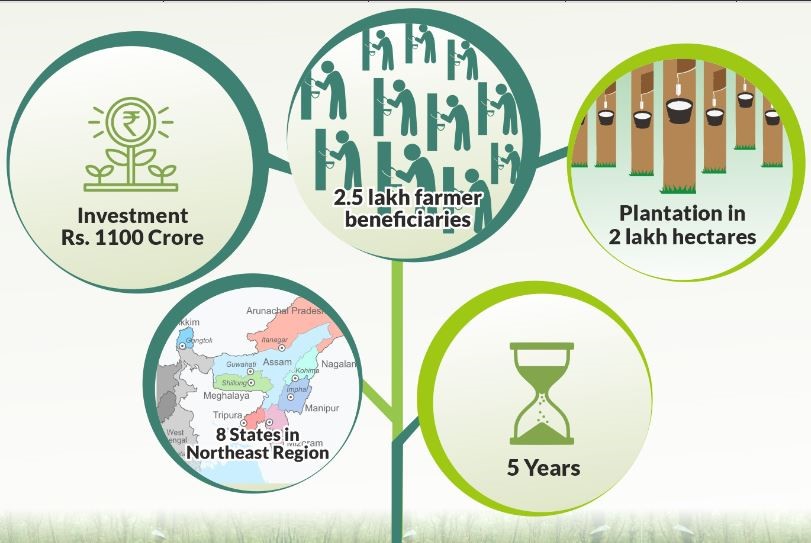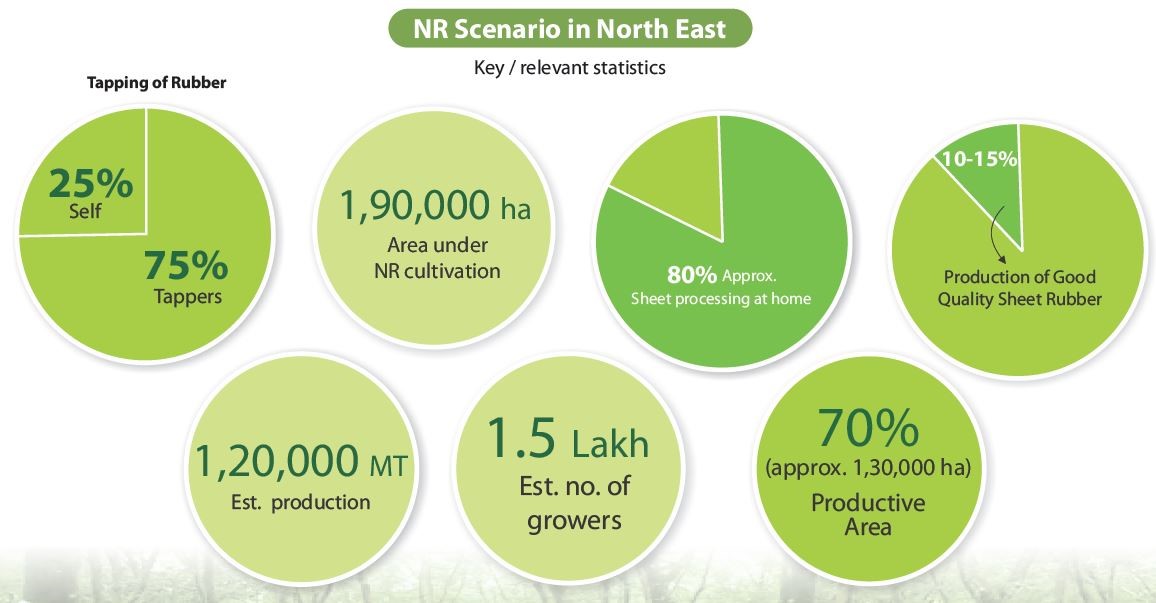7667766266
enquiry@shankarias.in
Why in the news?
The coverage of natural rubber plantations in the North-Eastern States under the Project INROAD for the Financial Year, 2025 has been completed recently.
What is Project INROAD?

What is the need for the project?

What are the components under the Project INROAD?
The Rubber Board is a statutory body constituted by the Government of India, under the Rubber Act 1947, for the overall development of the rubber industry in the country.
What are the benefits of the Project INROAD?
What are the impacts of the Project INROAD?
|
Quick Facts |
|
Rubber Board of India
|
|
Automotive Tyre Manufacturers’ Association (ATMA)
|
References